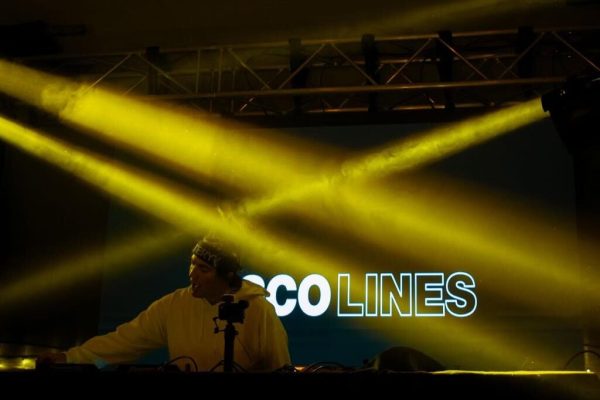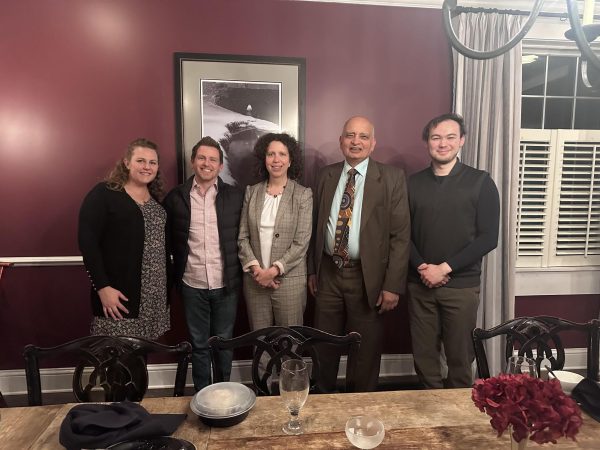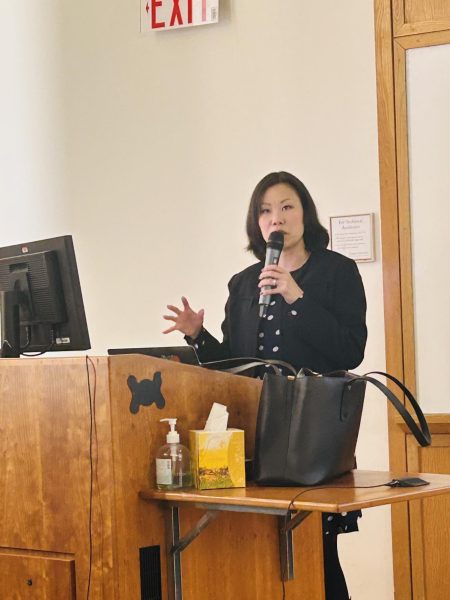Truth and Empowerment Onstage: Ain’t I A Woman! Takes Palace

At a women’s rights convention in 1851, Sojourner Truth repeatedly posed the question, “And ain’t I a woman?” While the question was rhetorical, the point it made was meaningful and eloquent: women are as capable and competent as men. It is from this passionate and consequential rhetorical device that the “Ain’t I A Woman!” theatrical performance, which took place Tuesday evening at the Palace Theatre, derives its name.
The performance was a fusion of monologue and chamber music put on by The Core Ensemble, a group that weaves stories together with music. Women’s Studies Program Director Liz Thompson orchestrated bringing the event to the Colgate campus. She felt that the show, “highlighted the stories of women in history whose contributions to American culture are often overlooked,” and that it had the ability to impart upon its audience, “a better idea of the important efforts made by women of color, especially in regard to the abolition of slavery, suffrage and the arts.”
Though chamber music groups conventionally play classical pieces, this ensemble incorporated nontraditional pieces that reflected the fruits burgeoning jazz scene during the Harlem Renaissance. Among the composers represented in the ensemble’s repetoire were Charles Mingus, Dianne Monroe, Thelonius Monk and John Coltrane. Additionally, the music included traditional lamentations or spirituals. The purpose of the musical accompaniment was to provide artistic context and, according to one of the musicians, to play out the idea that music is connected to spiritual renewal.
Though the music was an appreciated complement, the monologues were, perhaps, the most moving part of the performance. Actress Shinnerie Jackson took on the role of four African American women: author Zora Neale Hurston, visual artist Clementine Hunter, civil rights activist Fannie Lou Hamer and abolitionist Sojourner Truth.
Jackson adapted skillfully to the range of roles that the different monologues required of her. While each woman had a distinct story, character and effect, it was clear that all of their individual work underpinned by a deep-seated passion. In the role of Zora Neale Hurston, Jackson most eloquently defined this devotion, as “the thing chewing inside of me that must be said.” In effect, the words spoke to each woman’s desire to express herself through action, be it artistic or activist.
“Ain’t I A Woman!” was the debut for a series of events at the Palace that will focus on women. Certainly, the performance was an apt premier as it celebrated the impressive accomplishments and achievements of women who had to work incredibly hard to gain recognition in a society that did not privilege their work.
Aside from dealing with the constraints of gender and womanhood, the performance delved into issues of race and, more specifically, segregation. In the Clementine Hunter monologue, Jackson communicates the absurdity that Hunter, a celebrated artist, was not allowed to view her own art exhibition at the same time as white people.
Even more striking were the brutal effects of segregation described in the Fannie Lou Hamer monologue, in which Hamer details the sheer barbarism and cruelty of the police through a description of the beatings she and other civil rights activists received at their hands. Jackson’s emotional and engaging performance solemnly communicated not only the inhumanity of Jim Crow laws, but also the resolve of civil rights activists to actively fight against racism and disenfranchisement.
Associate Professor of Sociology Meika Loe spoke further to the achievements of the women in the face of the many obstacles placed before them by society. Professor Loe touched at the meaningful impetus for the women’s work.
“For so many of these women it wasn’t that they decided they wanted to be famous,” Loe said. “It was more that the conditions of their lives-physical violence, discrimination, silencing and more-beat them down to the point where they had to stand up for who they were and what they believed in.”
Indeed, the entire performance spoke to the struggle to overcome challenges, and in doing so, served as an ode to the four women whose consequential work often goes unnoticed. Through the incorporation of Sojourner Truth’s speech in its entirety, “Ain’t I A Woman!” proffered a reverence for past struggles and celebrated the power it takes to overcome oppression.






